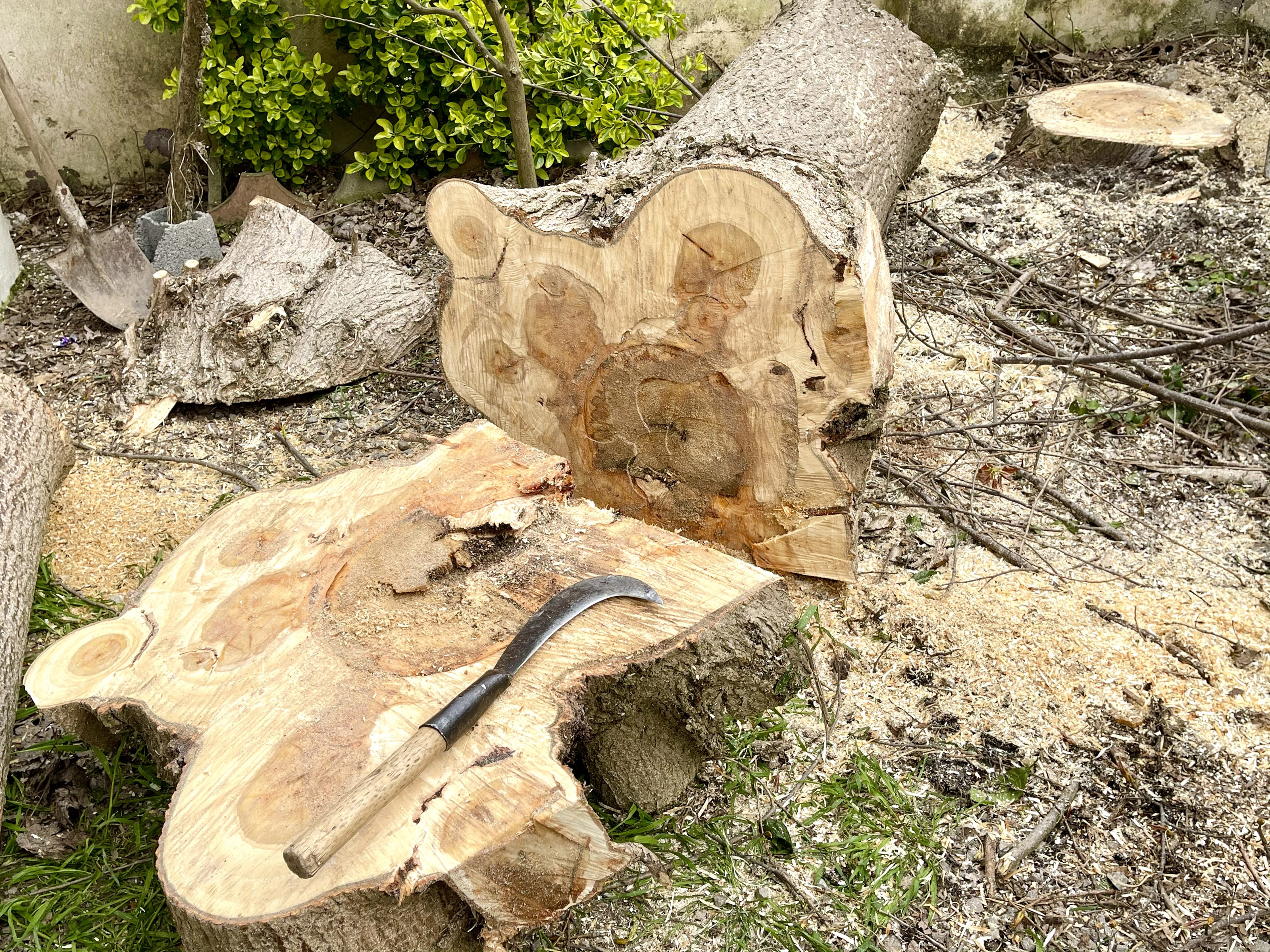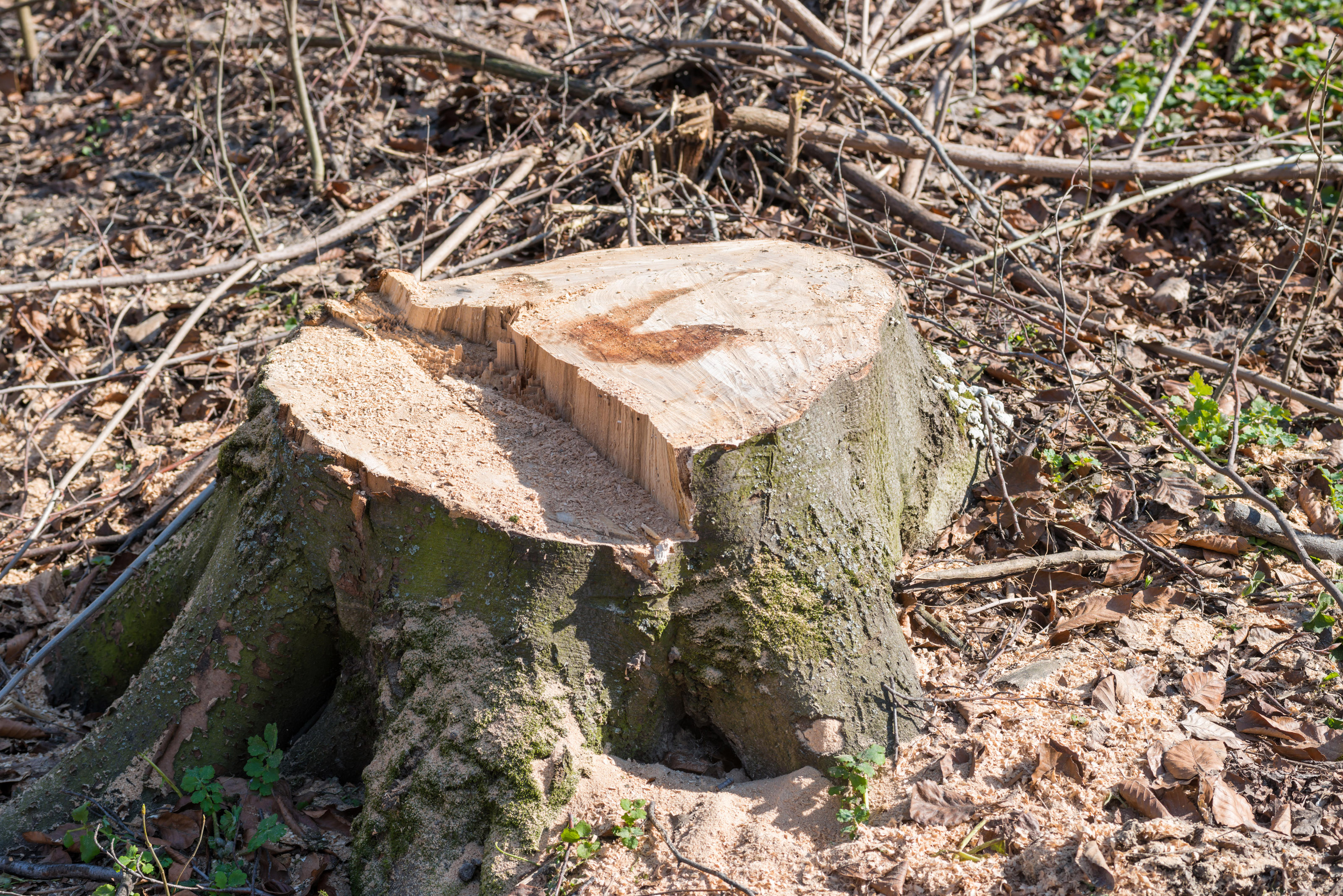How to kill a tree stump: an easy step-by-step guide to using natural and chemical methods
Find out how to kill a tree stump with these techniques and make space for the lawn or flowerbed you’d like there instead


Wondering how to kill a tree stump? Once the tree is gone, its stump takes up valuable garden real estate which could be used for something else you want to grow, like flowers or shrubs, or simply to extend the lawn.
But with deep roots reaching into the ground, a tree stump can be a challenge to get rid of, unless you kill it first. And to do this, a little know-how is required.
Just like learning how to get rid of weeds successfully, there are several methods you can try for how to kill a tree stump, which include both natural and chemical options. So to find out how to undertake the job safely and successfully, just scroll down for our step-by-step instructions.
What are the benefits of killing a tree stump?
As well as taking up space, the stump of a tree that’s been felled can continue to produce new shoots from both the trunk and roots, giving you a new plant where you didn’t want one.
If the stump is completely dead it won’t do this, but root diseases can take hold, so learning how to kill a tree stump and getting rid of it entirely will prevent this from happening.
How to kill a tree stump naturally: step-by-step guide
Keen on sustainable gardens and looking for natural ways for how to kill a tree stump? This home solution will do the job without harming the soil surrounding it.
- You will need 100 per cent Epsom salts to start with. Don’t be tempted to use table salt instead as it isn’t good for the soil.
- Saw off the top of the stump to expose fresh wood. Find the right tool for the job with our best hand saw guide.
- Drill a series of holes around the edge of the tree stump. They should be around 1in (2.5cm) in diameter, and 12in (30cm) deep if you have a long enough drill bit; if not, aim for at least 8in (20cm) depth. Deep holes help the salt solution which you’re about to apply saturate the roots.
- Make up an Epsom salts solution, then pour it slowly into each of the holes. Take care that it doesn’t overflow. Excess salt could affect the surrounding soil and roots of other plants.
- Seal the holes with wax. You can burn an unscented candle and drop the wax carefully into them.
- Cover the stump with a plastic sheet or tarpaulin to deprive it of sun and water and help it decompose more quickly, and secure the sheet in place. Leave the stump to decompose for a period of four to six weeks, then check the stump.
- If the wood is sufficiently soft, you can break it up using an axe. Not broken down enough? Repeat the above steps, leaving the stump for three weeks or so, then take a look again.
Want to know how to remove a tree stump once it's dead? Head over to our guide for plenty of practical solutions.
How to kill a tree stump with a stump killer

You’ll find a range of tree stump killers on offer, which use a selection of chemicals to do the job. The method may be the same as the DIY version above, involving drilling the stump and then adding the product to the holes. However, you might need to treat all of the cut surface instead, for example.
As with the Epsom salts method, you’ll need to cover the stump with a plastic sheet or tarpaulin after treatment.
It’s always advisable to wear protective clothing including safety goggles, gloves and boots to stay safe when using pesticides.
Do bear in mind that using pesticides could have a negative impact on your wildlife garden ideas and isn't the best option if you're trying to create an eco friendly garden. Be extra cautious if you have young children or pets too.
Should you burn a tree stump to kill it?
While you can burn a tree stump to kill it, our advice is to avoid this approach and use the Epsom salts method, above, or set yourself up with a specialist product. Tree stumps often don’t burn well because they are wet, but it’s also a potentially dangerous strategy, and your neighbors aren’t likely to thank you, either.
Want to leave your tree stump where it is and make feature of it instead? There are plenty of creative solutions in our tree stump ideas.

Sarah is a freelance journalist and editor writing for websites, national newspapers, and magazines. She’s spent most of her journalistic career specialising in homes and gardens and loves investigating the benefits, costs and practicalities of home improvement. It's no big surprise that she likes to put what she writes about into practice, and is a serial house revamper.
